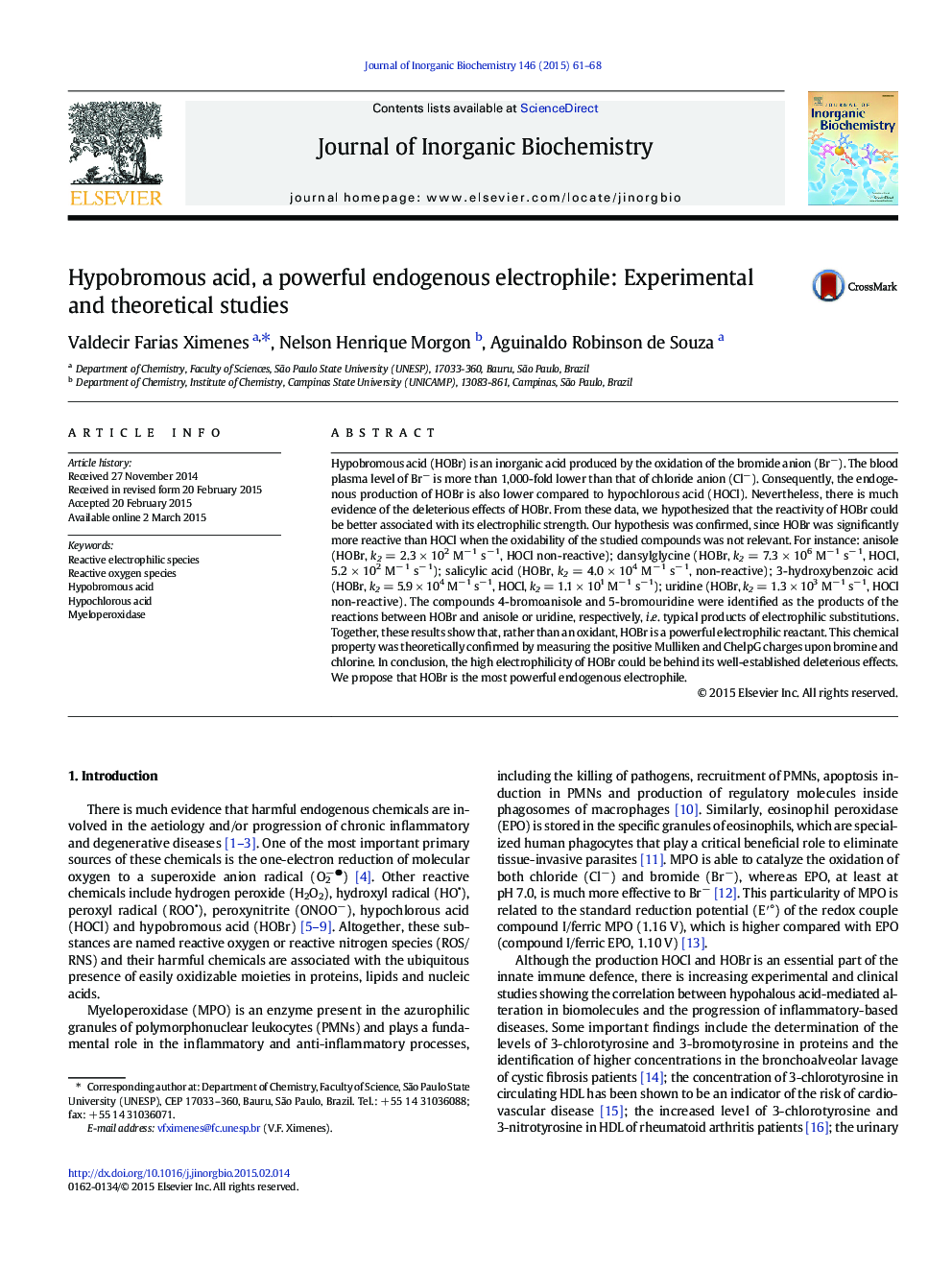| کد مقاله | کد نشریه | سال انتشار | مقاله انگلیسی | نسخه تمام متن |
|---|---|---|---|---|
| 1316113 | 1499441 | 2015 | 8 صفحه PDF | دانلود رایگان |
• Hypobromous acid (HOBr) is the most powerful endogenous electrophile;
• As an electrophile, HOBr is about 1,000-fold more reactive than HOCl;
• The high electrophilicity of HOBr could be behind of its endogenous harmful effects.
Hypobromous acid (HOBr) is an inorganic acid produced by the oxidation of the bromide anion (Br−). The blood plasma level of Br− is more than 1,000-fold lower than that of chloride anion (Cl−). Consequently, the endogenous production of HOBr is also lower compared to hypochlorous acid (HOCl). Nevertheless, there is much evidence of the deleterious effects of HOBr. From these data, we hypothesized that the reactivity of HOBr could be better associated with its electrophilic strength. Our hypothesis was confirmed, since HOBr was significantly more reactive than HOCl when the oxidability of the studied compounds was not relevant. For instance: anisole (HOBr, k2 = 2.3 × 102 M− 1 s− 1, HOCl non-reactive); dansylglycine (HOBr, k2 = 7.3 × 106 M− 1 s− 1, HOCl, 5.2 × 102 M− 1 s− 1); salicylic acid (HOBr, k2 = 4.0 × 104 M− 1 s− 1, non-reactive); 3-hydroxybenzoic acid (HOBr, k2 = 5.9 × 104 M− 1 s− 1, HOCl, k2 = 1.1 × 101 M− 1 s− 1); uridine (HOBr, k2 = 1.3 × 103 M− 1 s− 1, HOCl non-reactive). The compounds 4-bromoanisole and 5-bromouridine were identified as the products of the reactions between HOBr and anisole or uridine, respectively, i.e. typical products of electrophilic substitutions. Together, these results show that, rather than an oxidant, HOBr is a powerful electrophilic reactant. This chemical property was theoretically confirmed by measuring the positive Mulliken and ChelpG charges upon bromine and chlorine. In conclusion, the high electrophilicity of HOBr could be behind its well-established deleterious effects. We propose that HOBr is the most powerful endogenous electrophile.
Hypobromous acid (HOBr) is an endogenous inorganic acid biosynthesized in lower amount compared to hypochlorous acid (HOCl). However, HOBr is the about 1000-fold more electrophilic than HOCl. It reacts with biomolecules which are not susceptible to HOCl. We propose that HOBr is the most powerful endogenous electrophile.Figure optionsDownload as PowerPoint slide
Journal: Journal of Inorganic Biochemistry - Volume 146, May 2015, Pages 61–68
